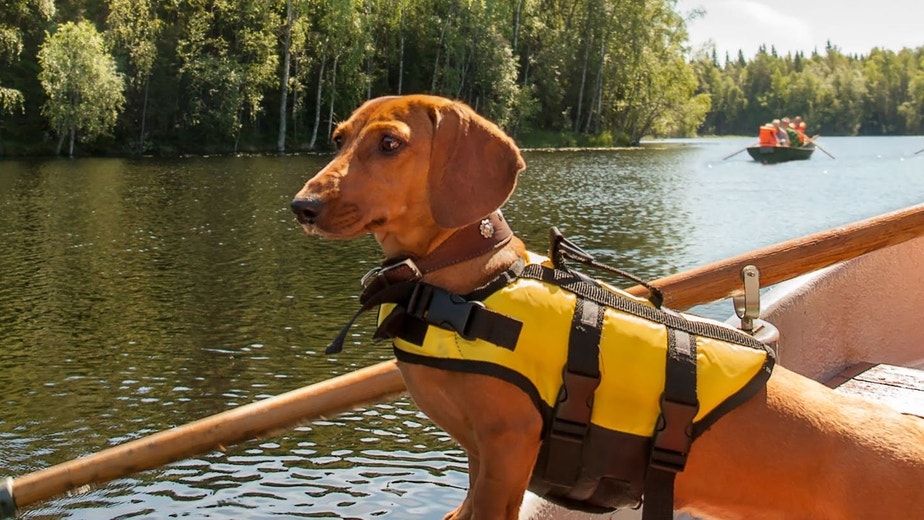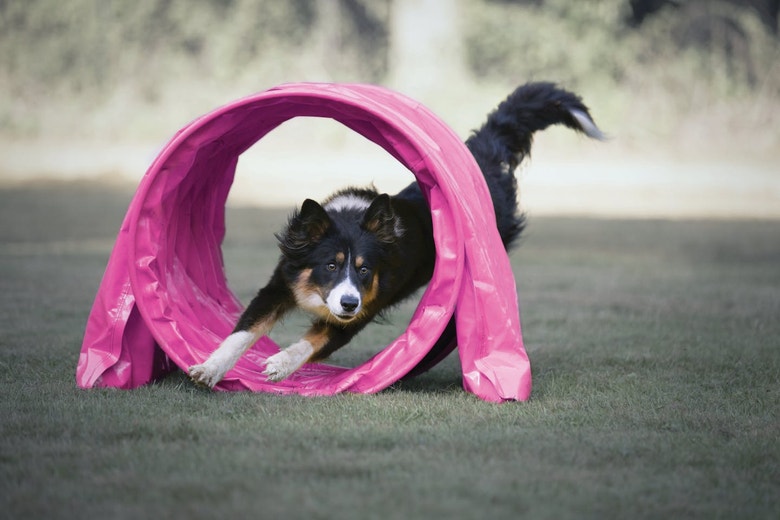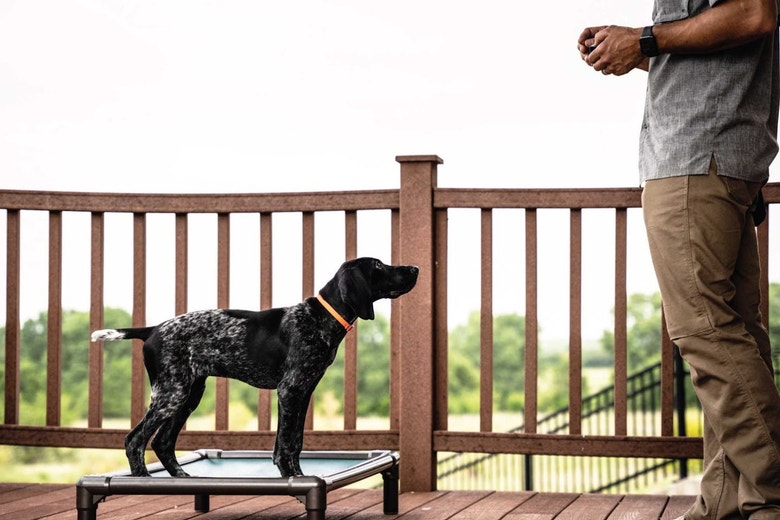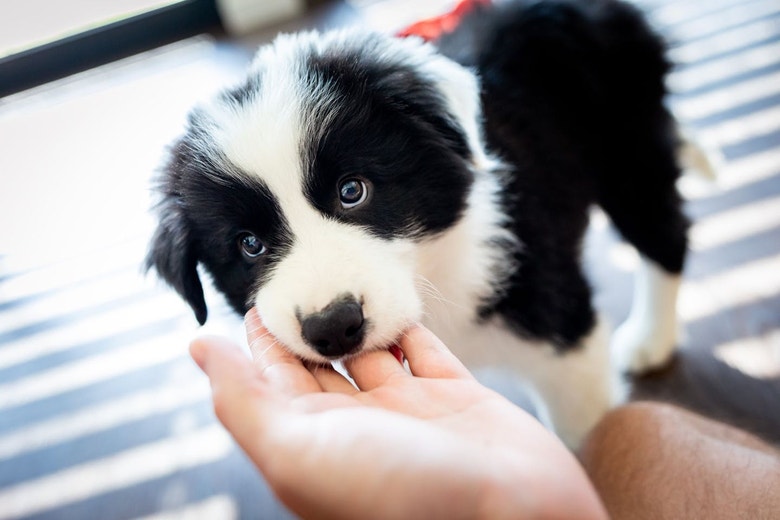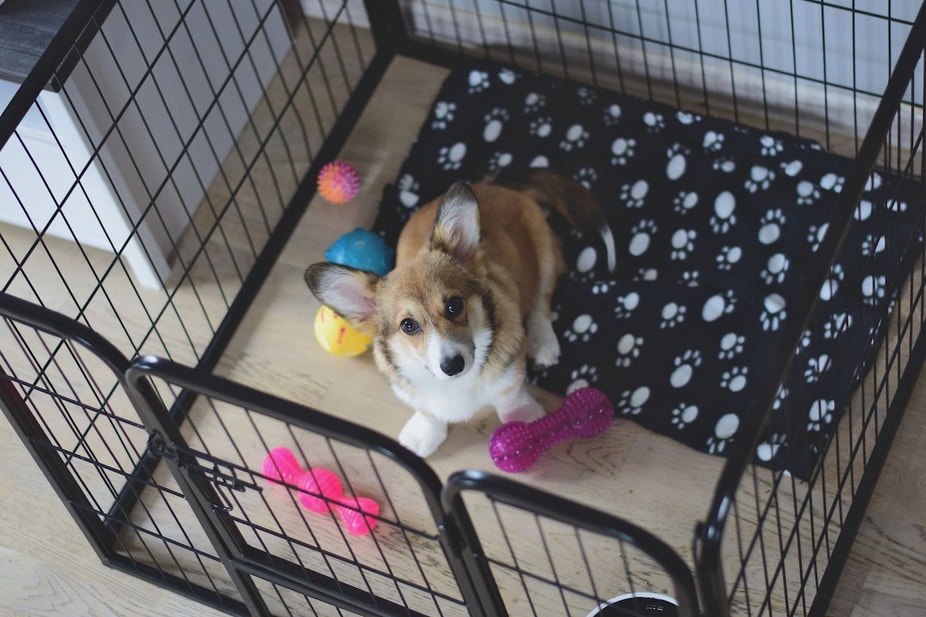
The Ultimate Guide To Crate Training Your Puppy
Many experts agree that crate training is an excellent way to improve your puppy’s life. But what is crate training, and how can it help your puppy?
A crate is a small space your puppy can be in for extended periods in your home and could be an enclosed crate or a play pen. This gives them a ‘safe space’ to retreat to, while helping with toilet training as well. (The puppy will seek a place outside the crate to go toilet.)
In This Article
What Are the Benefits of Crate Training A Puppy?(open in new tab)
When Should You Start Crate Training A Puppy?(open in new tab)
How Do You Train An Older Dog To Sleep In A Crate?(open in new tab)
How Do I Crate Train My Puppy? A Step By Step Process(open in new tab)
How Long Should My Puppy Stay In the Crate?(open in new tab)
How To Choose The Right Crate For Your Puppy(open in new tab)
Common Problems When Starting Out Crate Training(open in new tab)
When Should You Start Crate Training a Puppy?
WHAT ARE THE BENEFITS OF CRATE TRAINING?
Having a puppy crate eases many of the challenges of everyday life with a dog. The biggest motive for teaching a puppy to use a crate is that it’s an extremely handy tool for toilet training a puppy. As a bonus, it’s also the easiest form of transportation when your puppy needs to visit the vet, when you need to travel to a friend's house, or when you’re going on a road trip – just close the crate and away you go! Finally, a crate can act as a secure place to leave your puppy when you leave the home, ensuring that they can't get themselves in any trouble.
To explain why crate training a puppy is so important, we’ve created a detailed list outlining the benefits. Let’s get started.
1. Crate Training Helps A Puppy With HOUSE TRAINING
Crates are really useful for toilet training. Puppies are very clean by nature, and they don’t like to be near their own urine-soaked space any more than you do.
That’s why selecting an appropriate crate size is essential for successful training. If you choose a crate that’s too large, your puppy may see this as an invitation to pee in one corner and sleep in another. By using a crate, you’re teaching your puppy to control their bladder and display clear signals to let you know exactly when they need to go to the toilet.
When your puppy wants to go, they may whine and scratch at the crate. Whenever you see this behavior, it's important to act quickly by leading them to their designated toilet area outside. Remember, they can’t hold on for long!
2. Crate Training Can Help With Separation Anxiety:
To help puppies dealing with separation anxiety(open in new tab), it is important to establish a positive association with their crate. This will encourage them to use it more often, and teach them to be comfortable being away from you. Soon enough, they’ll view the crate as a safe space to retreat to whenever they feel the need.
You can help create this positive association by offering your puppy food or a verbal reward for entering the crate. Remember, don’t rush things. To avoid overwhelming your puppy, dogs need to be trained to be able to stay in a crate. You should also ensure your puppy’s had ample opportunity to go to the toilet before entering the crate
3. Crate Training Can Help To Prevent Bad Behaviour In Puppies:
With a new puppy, you’ll need to be on your guard constantly. Of course, because you’re not superhuman, this isn’t always realistic. One of the biggest perks of crate training is that it provides your puppy with some much-needed downtime while you go about your day.
This is where a crate comes in really handy. If you give them a couple of toys, some food, and a comfy bed for them to rest while you’re gone, they’ll be as happy as can be in there. However it is important to note that some dogs do not like being crated and need training in a step by step approach.
4. A Crate Provides A Safe Space For Your Puppy
Just like us, puppies need their own space. Giving them an environment where they feel secure to retreat is essential for their overall happiness and mental health.
This is harder than it looks! All we want to do when we get a new puppy in the door is to round up our family and friends for playtime. Introducing a puppy to the family is a magical and exciting time, so organizing an impromptu family gathering is pretty tempting …
Not so fast, though. While exposure’s good for young puppies learning socialization, it can be stressful and overwhelming if it’s too much, too soon. That’s why a crate can be great, because it gives them a space to retreat to when they’re feeling stressed.
And because it’s their own space, it’s important not to physically remove your puppy from the crate when they have chosen to retreat there. (Think how it would feel getting dragged out of your bedroom for no apparent reason.) If you need them to come right now, it’s time to get some treats and entice them. That’ll encourage them to emerge on their own.
WHEN SHOULD YOU START CRATE TRAINING A PUPPY?
We recommend crate training your puppy from 8 weeks old - pretty much as soon as you bring them home. This gives your puppy plenty of time to familiarise themselves with their crate which will help them feel more relaxed and settled in your home.
We suggest having your crate set up before the puppy even breaches the front door so that you can introduce them to their crate straight away. Keep the crate open during the day so that they can go in and out of it as they please. It’s important that they’re not kept in their crate for long periods of time in the beginning, as this needs to be a gradual process.
CRATE TRAINING IS BENEFICIAL FOR DOGS OF ALL AGES
There’s no reason why an older dog can’t be crate trained - it just may take a little longer to train them than it would a puppy. Here are a few benefits to crate training an older dog:
- Safety and preparedness in the case of an emergency
- Safe transportation when going on road trips or visiting the vet
- Provides safe confinement during illness
- Provides a safe place for your dog to relax during stressful or overwhelming situations
When you’re training an older dog to sleep in a crate, patience is the key.
Because they’re more set in their ways, it often takes more time for an older dog to get used to its crate than it does a puppy. For a puppy, everything’s new and exciting – there's no routine or habits for them to fall into. Older dogs are creatures of habit, and that’s why most of their training will involve helping them unlearn old habits and form new ones.
How Do I Crate Train My Puppy? Step By Step Process
Crate training a puppy takes time. How much time, though, depends on many factors – and it shouldn’t really influence how you train your puppy. You need to be consistent with their training, keeping patient and positive throughout your crate training puppy schedule. To enjoy the many benefits of crate training, proceed with the steps below … and whatever you do, don’t rush them!
1) Introduce Your Puppy To Their Crate:
Place the crate in an area of your house you’d like your puppy to spend most of their time in, such as the living room. Make the crate look as enticing as possible for your puppy. You might include a toy (or two), their food bowl, and perhaps a few treats scattered around the entrance and inside (to encourage them to enter). Never force your puppy inside, as they’re likely to resist. And when that happens, your training time will increase as well.
2) Feed Your Puppy Inside The Crate:
After introducing your puppy to the crate, begin feeding them regular meals nearby. This will help create a positive association. If your puppy’s feeling more confident, start slowly pushing their food bowl into the entrance of the crate, moving it a bit further back each time until they’re comfortable eating their meals fully inside the crate.
Once your puppy’s begun eating comfortably inside the crate, you can close the door behind them. When they’ve finished eating, open it again. After every successful feeding, increase the amount of time they spend in the crate. It is important to consider how fast the food will be consumed otherwise the puppy may finish eating in a few seconds reducing the time of feeding in the crate.
3) How To Teach Your Puppy To Spend More Time in Their Crate :
When your puppy can eat their meals in the crate without showing any signs of anxiety or fear, you can start training them to go inside the crate on command.
To encourage your puppy to spend time in their crate, the best approach is to provide a reward. Begin by calling your puppy over to the crate. Once they are nearby, introduce a command like "kennel" or "in." After that, sit quietly near the crate's entrance for a maximum of 20 minutes. Then, gradually move to another room, allowing your puppy to associate the crate with the given command and become comfortable being inside the crate independently.
Repeat this process several times a day, slowly increasing the amount of time you’re out of sight when they’re inside the crate. Ideally during crate training you use a step-by-step approach so that your puppy does not get stressed in the crate/has a reason to whine. After having ample crate training you can begin leaving the house for short periods of time.
For a puppy, it is only recommended to leave them in the crate for one hour plus the number of months of age of the puppy and only up to about 6 hours for adult dogs.
Crate TrainING A Puppy At Night
Crate training your puppy at night is similar to regular crate training. However, it may be best to start by placing the crate in your bedroom or a hallway nearby. Puppies often need to go to the toilet at night, so you’ll need to hear them whining. Once your puppy’s comfortable falling asleep beside you at night, you can gradually move their crate to your preferred location.
How To Choose The Right Crate For Your Puppy
There are many considerations when choosing the crate that best suits your puppy’s lifestyle. Some of your first questions should be: Where will you use the crate? Are you wanting to move the crate around a lot? Or are you hoping to use it as a training tool? Either way, you’ll be glad to know there are different crates to choose from, depending on your ideal activity.
Metal Crates For Puppies
Metal crates provide a sturdy, safe place for your puppy to roam. Metal crates allow for plenty of ventilation for puppies with thick coats that feel the heat – and your puppy can see you the entire time, which helps with separation anxiety.
The downside to metal crates is that they’re heavy, which makes them difficult to move around.
Plastic Crates For Puppies
Plastic puppy crates are more enclosed, offering more privacy and space for your puppy to spend on their own. If you have a puppy that needs to escape when they’re feeling overwhelmed or simply needs some downtime, a plastic crate could be the ideal choice.
Plastic crates are lightweight, as well as being easy to move and clean. Another major benefit is that puppies find it harder to escape from plastic crates, whereas wire crates can sometimes allow your puppy to pull a Houdini.
The only thing that you may need to be mindful of is that plastic crates don’t have as much ventilation as metal crates.
Soft-Sided Crates For Puppies
These types of crates aren’t for everyone. They’re more destructible than metal and plastic companions, making them the wrong choice for puppies who like to scratch and chew at their confines.
For crate-trained or exceptionally calm puppies of any size, though, a soft crate is a comfortable, lightweight travel option.
What Not To Do During Crate Training
Whatever you do, don’t use the crate as a form of punishment. It’s important that your pup feels secure, safe, and protected when inside their crate, which essentially acts as a haven for them to escape to when needed. If you start using their crate as a form of punishment, it will confuse your puppy, and they may develop an aversion to the crate.
Don’t Leave Your Puppy In Their Crate For Too Long
Don’t let your puppy out of the crate because they’re whining
Don’t Force Your Puppy Inside The Crate
References
Grandjean, D., Andre, C.,Bacque, H., Bedossa, T., Boogaerts, C., Clero D., Colliard, L., Grellet, A., Polack, B.,Rogalev, A and Haymann, F. 2020. The Dog Encyclopedia. Royal Canin SAS. www.royalcanin.com. 930 pp.
Scott, JP. and Fuller, J.L1965.Genetics and the Social Behaviour of the Dog. Chicago University Press. 508 pp.
Whelan, F., 2014. House Training. Veterinary Nursing Journal 21(3) 20-21.
Sheman, B.L. and Mills, D.S., 2008. Canine Anxiety and Phobias: An Update on Separation Anxiety and Noise Aversions. Veterinary Clinics of North America: Small Animal Practice 38(5)1081-1106.

